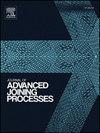An energetic approach to the statistical analysis and optimization of friction welding processes applied to an aluminum-steel-joint
Abstract
The present publication deals with an energy-oriented approach to the statistical analysis of rotational friction welding processes. To illustrate the methodological approach, it is applied to investigate the effects of energy flow on material flow behavior and joint quality during friction welding of an AA6060 alloy with a low-alloy 16MnCr5 filler steel. The influences of the setting parameters on the energetic states are first analyzed by means of an initial screening. The evaluation using process simulation and statistical methods enables the generation of regressive response surfaces for the friction power, the friction time and the resulting induced friction energy. Based on these findings, a second experimental field is formed and evaluated, which considers the interaction between the energy input of the frictioning stage and the workpiece forging. This new approach results in the functional separation of the frictioning and forging stage, which eliminates the usual statistical interaction effects and thus facilitates analysis and optimization. The qualitative result variable required for the purpose of interpreting the results is the ultimate tensile strength of the friction-welded joint. Additionally determined hardness curves provide information about the properties of the thermally influenced zone and strength-relevant process sequences. The result is that, in addition to the amount of energy induced, the frictional power with which the former is induced also has a considerable influence on the joint strength, as it influences the material flow and the properties of the joining zone.

 求助内容:
求助内容: 应助结果提醒方式:
应助结果提醒方式:


